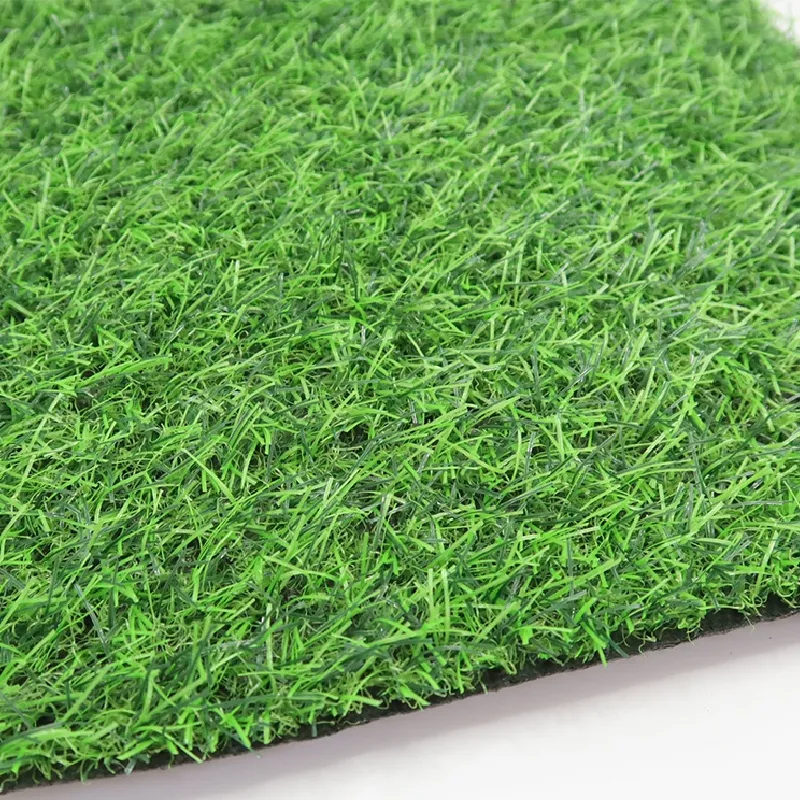
- Afrikaans
- Arabic
- Belarusian
- Bengali
- Czech
- Danish
- Dutch
- English
- Esperanto
- Estonian
- Finnish
- French
- German
- Greek
- Hindi
- Hungarian
- Icelandic
- Indonesian
- irish
- Italian
- Japanese
- kazakh
- Rwandese
- Korean
- Kyrgyz
- Lao
- Latin
- Latvian
- Malay
- Mongolian
- Myanmar
- Norwegian
- Persian
- Polish
- Portuguese
- Romanian
- Russian
- Serbian
- Spanish
- Swedish
- Tagalog
- Tajik
- Thai
- Turkish
- Turkmen
- Ukrainian
- Urdu
- Uighur
- Uzbek
- Vietnamese
Benefits and Features of Synthetic Grass in Football Fields
Dec . 26, 2024 05:45 Back to list
The Rise of Synthetic Grass in Football A Game Changer
In recent years, synthetic grass has emerged as a transformative force in the world of football, redefining the way the game is played, practiced, and enjoyed. With its durability, aesthetic appeal, and ease of maintenance, synthetic grass has become increasingly popular among clubs, schools, and recreational facilities, providing a practical solution to the challenges posed by natural grass fields.
Understanding Synthetic Grass
Synthetic grass, also known as artificial turf, is composed of synthetic fibers designed to resemble natural grass. The materials used in its production have evolved dramatically over the years, with advancements in technology allowing for more realistic textures and colors. The original applications of synthetic grass can be traced back to the 1960s, primarily in stadiums for American football. However, its application has since diversified, with football being one of the primary sports to benefit.
Advantages of Synthetic Grass
One of the biggest advantages of synthetic grass is its durability. Natural grass can be easily damaged by heavy foot traffic, adverse weather conditions, or improper care. In contrast, synthetic surfaces are built to withstand challenging conditions, providing a consistent playing surface regardless of the weather. This reliability can enhance performance, as players can train and compete on safe, even ground without concern for mud, potholes, or uneven patches that typically plague natural fields.
Maintenance is another area where synthetic grass shines. Natural grass requires watering, mowing, fertilizing, and pest control, which can be costly and time-consuming. Synthetic grass, on the other hand, requires minimal maintenance, generally needing only regular brushing and occasional rinsing to keep it free from debris. This reduced upkeep not only saves time and money but also allows clubs to redirect resources towards player development and community engagement.
Environmental Considerations
football synthetic grass

While there are concerns regarding the environmental impact of synthetic grass—particularly regarding temperature increases and the use of non-biodegradable materials—many manufacturers are now developing eco-friendly alternatives. Newer synthetic grasses are being made from recycled materials, and recent advancements focus on sustainability by using infill systems that are less harmful to the environment. Additionally, the water conservation benefits of synthetic grass cannot be overlooked; as it requires no irrigation, it significantly reduces water usage compared to its natural counterpart.
Community Engagement and Accessibility
Synthetic grass fields have also played a crucial role in enhancing community access to sports. Many urban areas struggle with limited space for natural grass fields, which can lead to competition for use among sports teams and recreational leagues. The installation of synthetic fields allows for increased accessibility, providing safe places for children and adults alike to engage in physical activity without the constraints of a natural environment. This increased availability can foster a sense of community as more individuals can participate in organized sports, thereby promoting health and teamwork.
Potential Drawbacks
Despite its many advantages, synthetic grass is not without its drawbacks. Concerns about player safety and injuries on synthetic surfaces have arisen, particularly regarding the increased risk of certain types of injuries, such as sprains or abrasions. Additionally, the heat reflecting properties of synthetic grass can lead to higher surface temperatures, necessitating careful management of play during hot weather. Ongoing research continues to address these issues and improve the safety standards associated with synthetic turf.
Conclusion
In conclusion, synthetic grass has revolutionized the landscape of football by providing a durable, low-maintenance, and accessible alternative to natural grass fields. Its benefits extend beyond just player performance; it positively impacts community engagement and resource allocation. As the technology continues to develop and address concerns related to safety and environmental sustainability, synthetic grass will likely play an even more significant role in the future of football. Clubs and organizations should examine their needs and consider integrating synthetic grass into their facilities to fully capitalize on the numerous advantages it offers, paving the way for a brighter and more sustainable future in the beautiful game.
-
The Benefits of Artificial Turf for Indoors
NewsJul.15,2025
-
How Artificial Grass Suppliers Ensure Quality Products
NewsJul.15,2025
-
Artificial Grass and Pets: A Space for Relaxation
NewsJul.08,2025
-
Balcony & Outdoor Decoration with Artificial Grass
NewsJul.08,2025
-
Best Indoor Artificial Grass for Home
NewsJul.07,2025
-
Best Pet Turf for Dogs: Safe & Durable Artificial Grass Options
NewsJul.07,2025
Products categories









